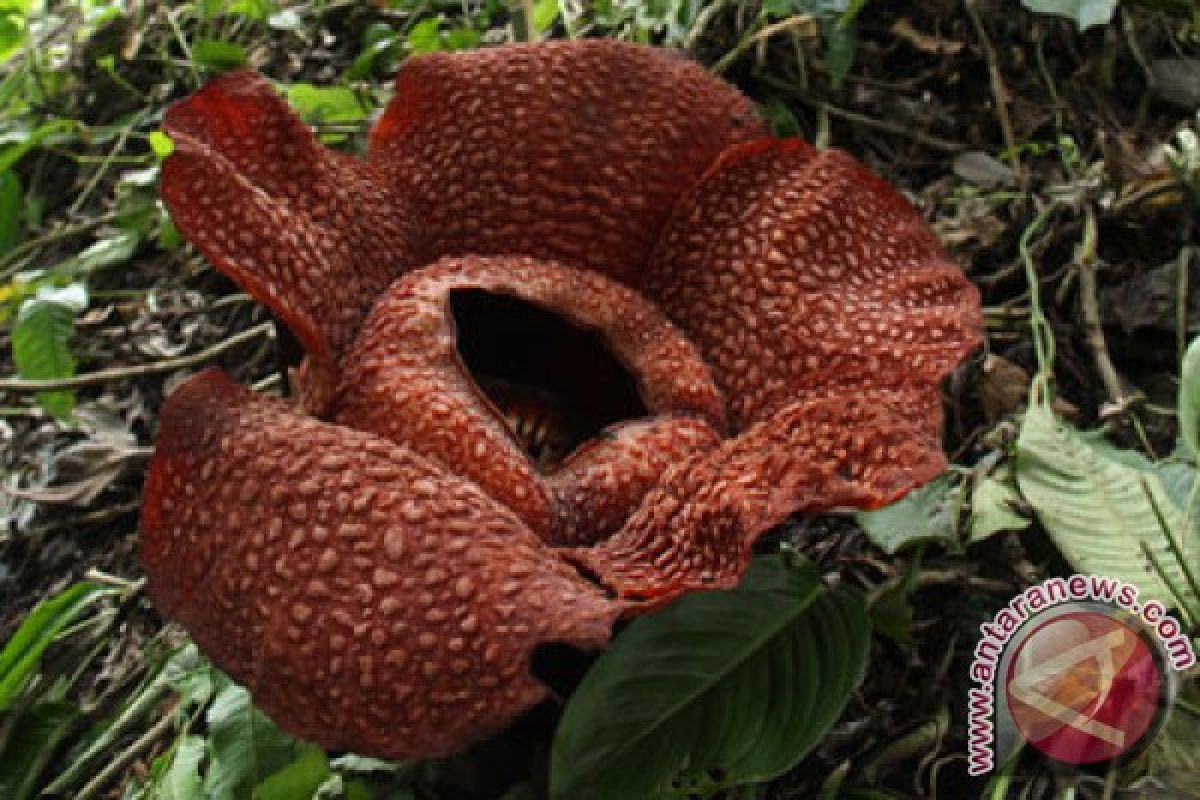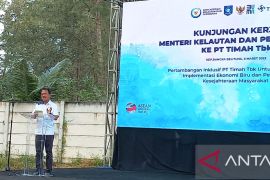If there are no attempts to address such a crime, the wild plants and wildlife will sooner or later become extinct and lead to instability in the life cycle.
Therefore, the Ministry of Environment and Forestry is now seriously engaged in a campaign against all forms of crimes against wildlife and plants by including its conservation as one of the supporting pillars of national development.
Forest conservation in Indonesia currently covers an area of 20.91 million hectares, or 16 percent of the total 130.68 million hectares of forest area in the country.
Environment and Forestry Minister Siti Nurbaya explained that the forest conservation must be managed comprehensively with a multidimensional approach, so that protection and natural conservation can go hand in hand with the economic development of Indonesia.
Forest is the natural habitat for wildlife, but the main factor of threatened wildlife in Indonesia is deforestation, which leads to decrease in forests in the country.
The conversion of forests into palm oil plantation, industrial production and mines threatens the survival of rare wildlife including orangutans, Sumatran tigers and Sumatran elephants.
Therefore, every effort must be made to raise public awareness for wildlife protection. Many large mammals such as Sumatran elephants are killed each year. Their tusks are hacked out and their bodies are left to rot.
Public awareness must also be raised to curb illicit trade involving wild animals and their products, which is currently the worlds fifth largest business with a turnover of US $19 billion each year.
Indonesia, according to ProFauna, is rich in biodiversity, with more than 300 thousand wildlife species, or 17 percent of those in the world.
Besides, the country also becomes the habitat of endemic wildlife, as most of the animals in Indonesia are found nowhere else in the world.
According to the International Union for Conservation of Nature and Natural Resources (IUCN), there are 259 endemic mammals, 282 endemic birds and 172 endemic amphibians.
Despite its rich biodiversity, Indonesia is also notorious as a country which has a long list of the threatened wildlife. The threatened wildlife in the country in 2011 included 184 mammals, 119 birds, 32 reptiles, 32 amphibians and 140 fishes.
There are 68 critically endangered species, 69 endangered species and 517 vulnerable species. These endangered wildlife will eventually be extinct if there is no action to save them from extinction.
In 2015, the Environmental Affairs and Forestry Ministry handled 27 cases of protected wildlife-related crimes, mostly involving mammals.
Of the 27 cases, 14 cases involved mammals, two involved birds, two involved primates, four involved fishes, four involved reptiles and one involved flora, according to the ministrys Director General for Law Enforcement, Rasio Ridho Sani.
Wildlife poaching happens due to forest clearance. Wildlife is considered pest by the plantation companies, which kill the animals in the plantation areas.
Apart from habitat degradation in both quality and quantity, illegal trade has become another threat to wildlife in Indonesia. More than 95 percent of the traded wildlife in the markets is wild-caught instead of captive-bred.
According to ProFauna, more than 40 percent of the traded wildlife dies in vain due to inappropriate transportation and handling, cruel capture, small cages and lack of food.
In mid-2015, the Indonesia Environmental Affairs and Forestry Ministry seized tens of yellow-crested cockatoo (Cacatua sulphurea) at Tanjung Perak seaport in Surabaya, East Java.
The protected birds were smuggled via a passenger ship Tidar serving Papua, Ambon, Makassar, Surabaya and Jakarta routes.
The endangered yellow-crested cockatoos were found stuffed into empty 1.5-liter mineral water bottles and were in critical condition.
Yellow-crested cockatoo has been listed as an endangered species since 2007.
It is estimated that only 7 thousand yellow-crested cockatoos exist in the world.
The government has set a protected species list in order to protect plants and wildlife. Until now, the number of protected species includes 127 species of mammals, 382 species of birds, 31 species of reptiles, 12 species Palmae, 11 species of Rafflesia and 29 species of Orchidaceae.
Indonesia is also active in enforcing law to combat animal trafficking, in addition to strengthening cooperation between the source countries, countries of destination and transit to disconnect the illegal trade network.
Other environmental problems that also require serious attention include water pollution, air pollution, waste management, as well as control of environmental damage due to mining activities.
In addition, wildlife crime has become a "Trans-national Organized Crime," and is similar to crimes such as corruption, money laundering, organized crime, illegal weapons, drugs and terrorism.
Conservation efforts can directly address the "wildlife crime," and the conservation, which is emphasized on the preservation and protection of biodiversity, prohibits hunting of protected wild plants and animals.
According to the Law No. 5/1990 concerning the Conservation of the Natural Resources and the Ecosystem, the trade of the protected wildlife is illegal and liable to a maximum of five-year prison term and a fine of Rp100 million.
However, the law is now considered outdated and unable to stop rampant illegal wildlife hunting and trading. Therefore, it needs to be revised immediately.
(Uu.O001/INE/KR-BSR/A014)
Reporter: Otniel Tamindael
Editor: Priyambodo RH
Copyright © ANTARA 2016












